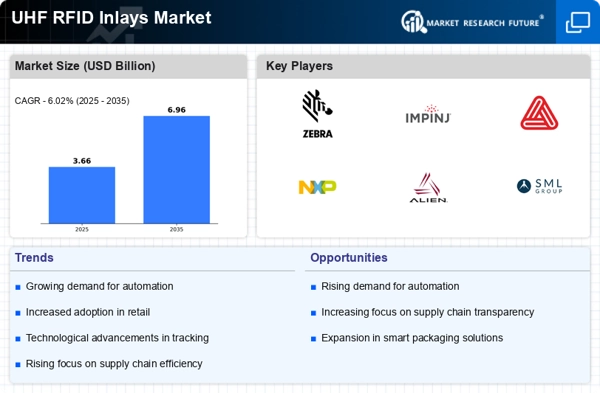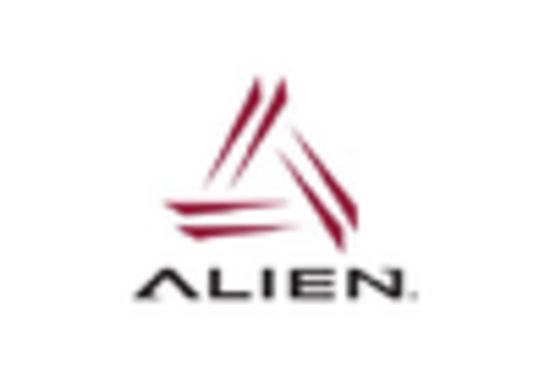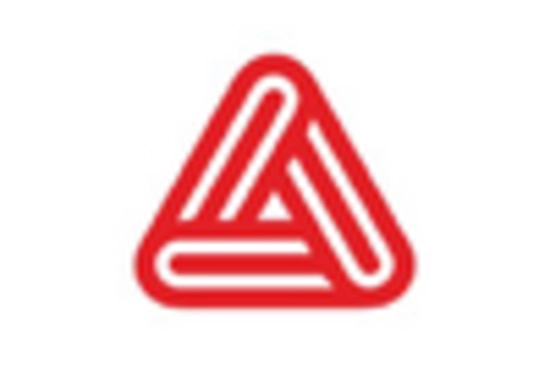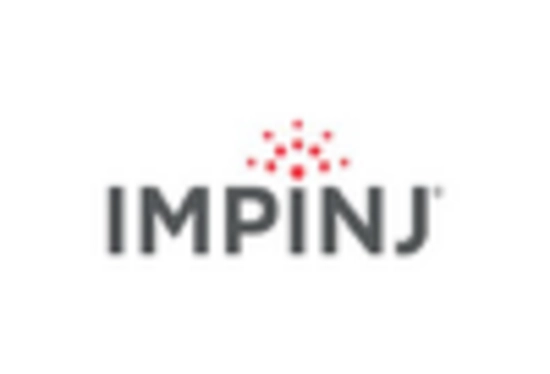The UHF RFID Inlays Market is currently characterized by a dynamic competitive landscape, driven by technological advancements and increasing demand for efficient inventory management across various sectors. Key players such as Zebra Technologies (US), Impinj (US), and Avery Dennison (US) are at the forefront, each adopting distinct strategies to enhance their market positioning. Zebra Technologies (US) focuses on innovation through the development of advanced RFID solutions that integrate seamlessly with existing supply chain systems, thereby improving operational efficiency. Meanwhile, Impinj (US) emphasizes partnerships with technology firms to expand its ecosystem, enhancing the functionality of its RFID solutions. Avery Dennison (US) is pursuing a strategy of regional expansion, particularly in emerging markets, to capitalize on the growing adoption of RFID technology in retail and logistics.
The business tactics employed by these companies reflect a concerted effort to optimize supply chains and localize manufacturing processes. The UHF RFID Inlays Market appears moderately fragmented, with several players vying for market share. However, the collective influence of these key players is significant, as they drive innovation and set industry standards, thereby shaping the competitive structure of the market.
In August 2025, Zebra Technologies (US) announced the launch of a new line of RFID inlays designed specifically for the retail sector, aimed at enhancing inventory accuracy and reducing shrinkage. This strategic move is likely to strengthen Zebra's position in the retail market, as it addresses a critical pain point for retailers seeking to improve operational efficiency. The introduction of these specialized inlays may also foster greater customer loyalty and open new revenue streams for the company.
In September 2025, Impinj (US) revealed a partnership with a leading logistics provider to integrate its RFID technology into the provider's supply chain operations. This collaboration is expected to enhance visibility and tracking capabilities, thereby improving overall supply chain efficiency. Such strategic alliances not only bolster Impinj's market presence but also highlight the growing trend of integrating RFID technology into broader logistics frameworks.
In July 2025, Avery Dennison (US) expanded its manufacturing capabilities in Asia, aiming to meet the rising demand for RFID solutions in the region. This expansion is indicative of Avery Dennison's commitment to localizing production and reducing lead times, which could enhance its competitive edge in the rapidly evolving market. By establishing a stronger foothold in Asia, the company is likely to better serve its customers and respond to regional market dynamics.
As of October 2025, the UHF RFID Inlays Market is witnessing trends such as digitalization, sustainability, and the integration of artificial intelligence into RFID solutions. These trends are reshaping the competitive landscape, as companies increasingly seek to differentiate themselves through innovative technologies rather than solely competing on price. Strategic alliances are becoming more prevalent, facilitating knowledge sharing and resource optimization among key players. Looking ahead, it seems that competitive differentiation will increasingly hinge on technological innovation, supply chain reliability, and the ability to adapt to evolving market demands.















Leave a Comment